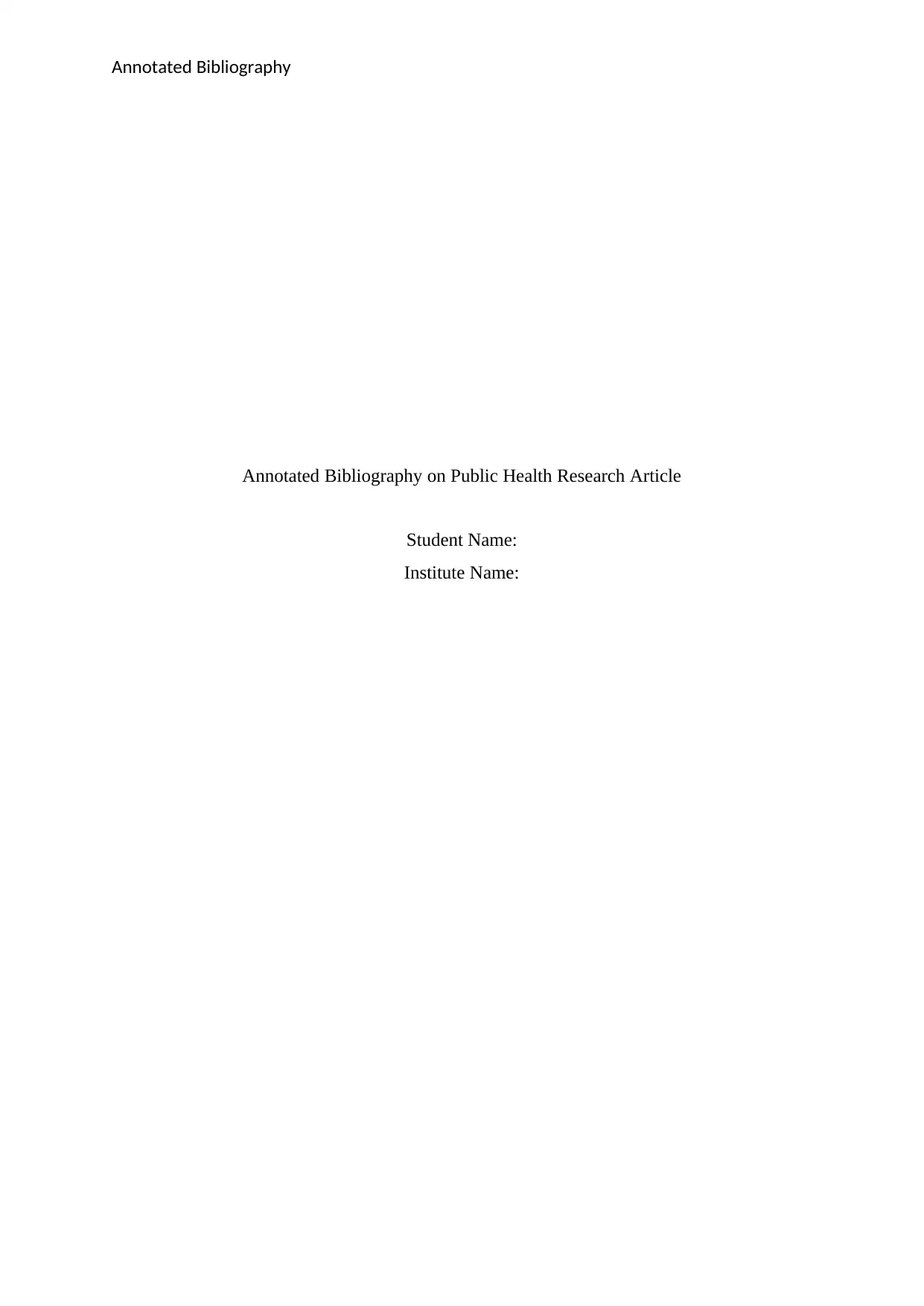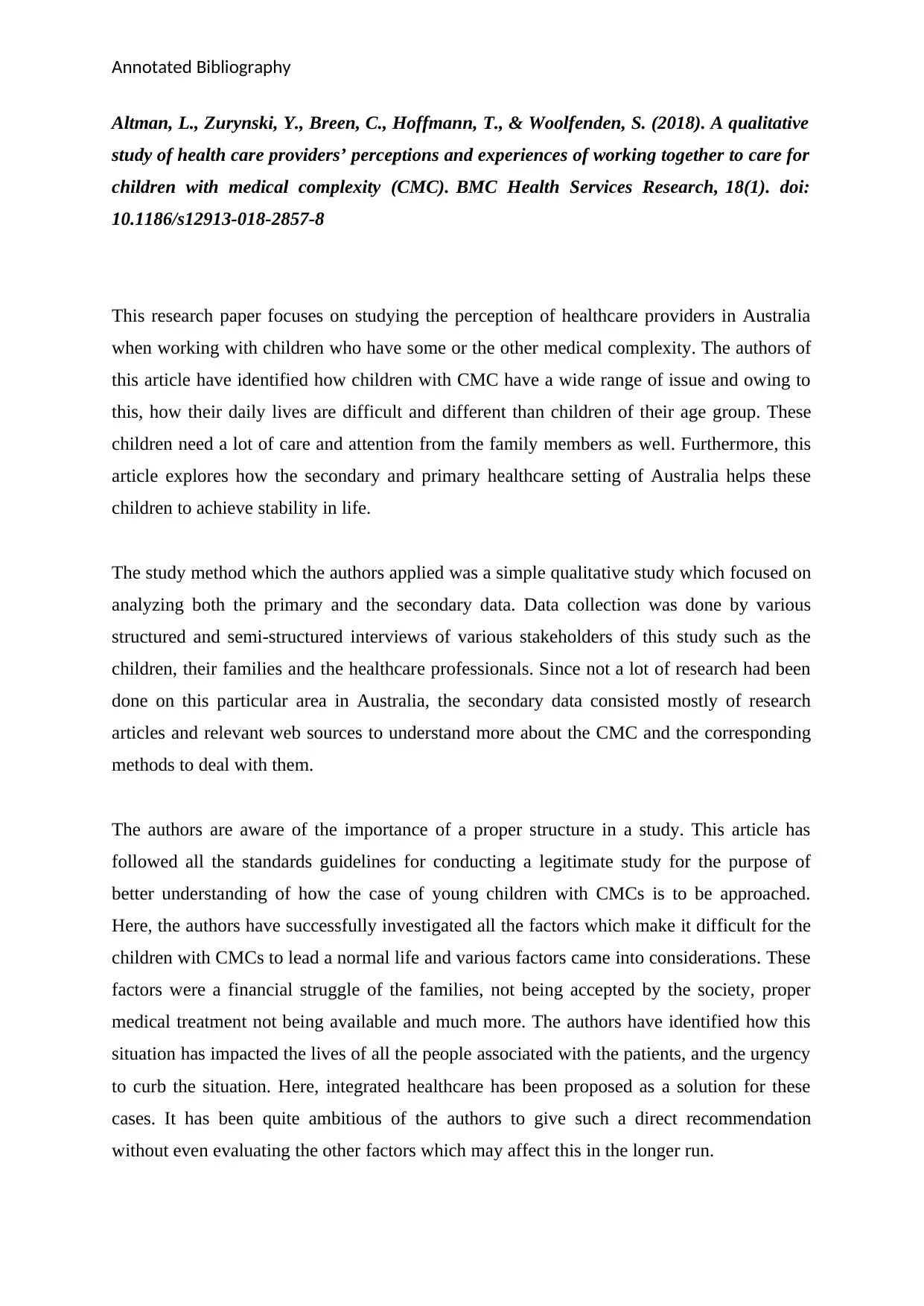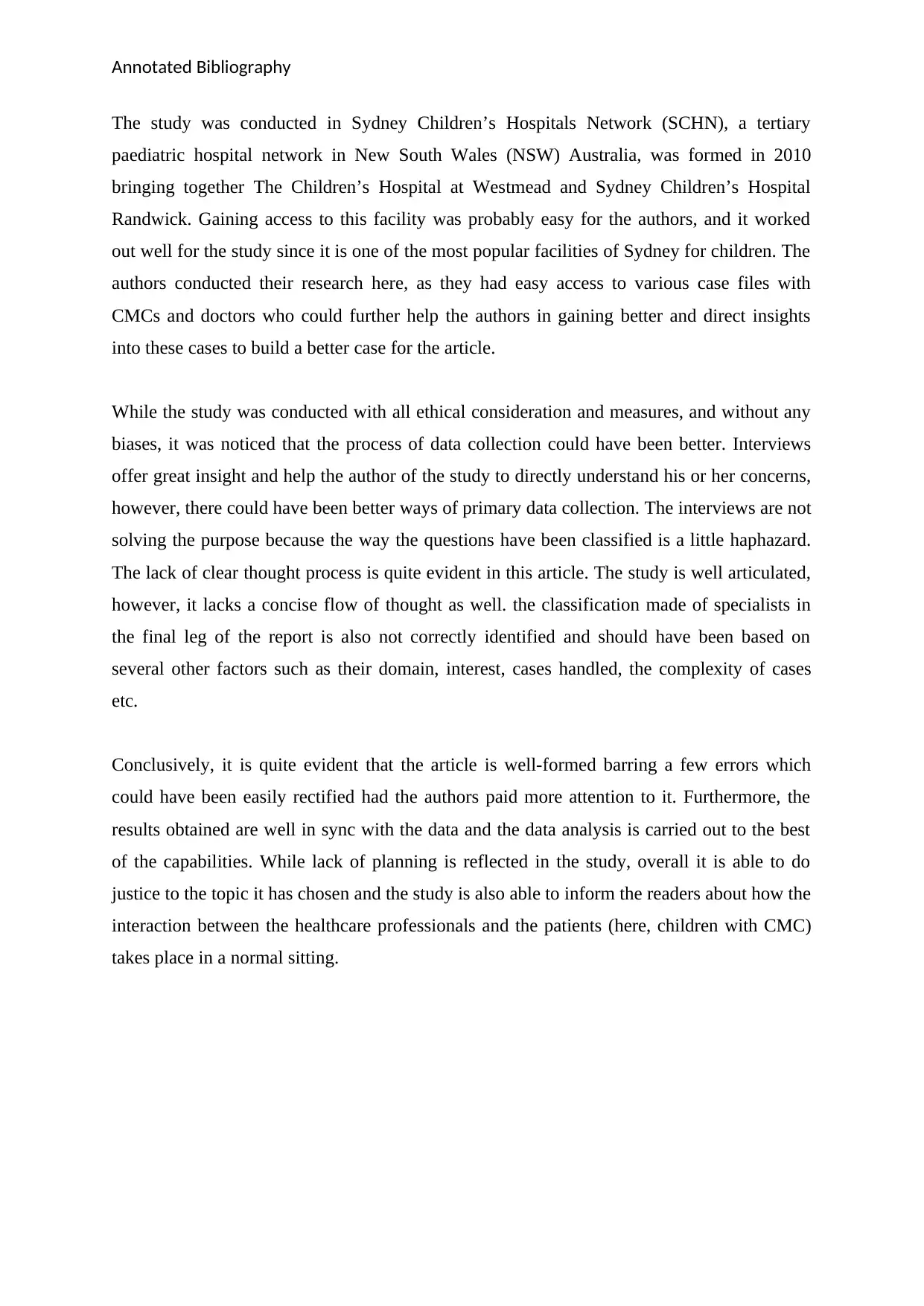Annotated Bibliography: Analysis of a Public Health Research Article
VerifiedAdded on 2023/01/16
|3
|853
|91
Annotated Bibliography
AI Summary
This annotated bibliography analyzes the research paper by Altman et al. (2018) which focuses on the perceptions and experiences of healthcare providers in Australia when working with children with medical complexities (CMC). The study uses a qualitative approach, gathering data through interviews with stakeholders, including children, families, and healthcare professionals. The paper explores the challenges faced by children with CMC, such as financial struggles and societal acceptance, and proposes integrated healthcare as a potential solution. The bibliography critically assesses the study's methodology, highlighting both its strengths, such as ethical considerations and data analysis, and weaknesses, such as the organization of interviews and the classification of specialists. Overall, the bibliography acknowledges the study's contribution to understanding the interaction between healthcare professionals and patients while pointing out areas for improvement in future research.
1 out of 3










![[object Object]](/_next/static/media/star-bottom.7253800d.svg)